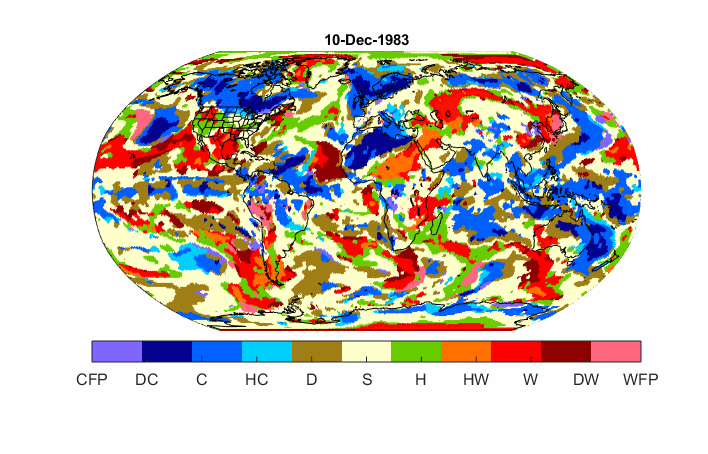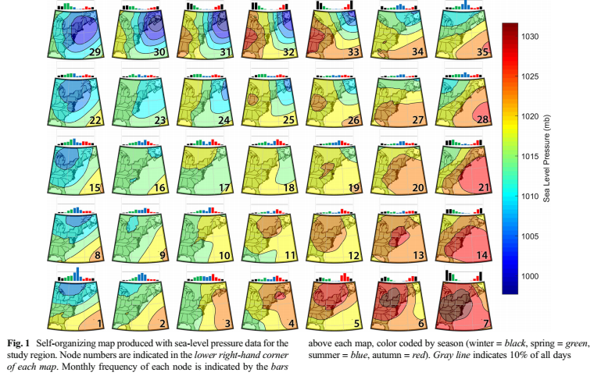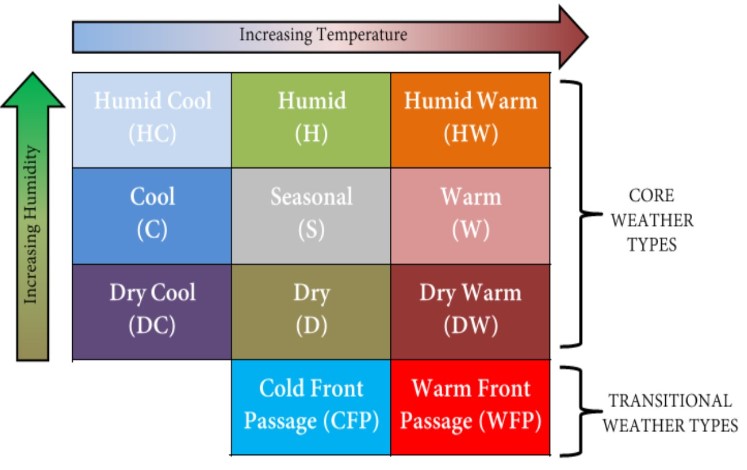Synoptic Climatology

The ClimRISE Lab (Climate Research in Synoptic Environments) is so named due to our common focus on synoptic climatology. Synoptic climatology, as a discipline, is the study of the climate through the lens of synoptic-scale systems – the transient high-pressure and low-pressure systems that move across the mid-latitudes, along with the accompanying set of air masses, fronts, upper-level circulation patterns, and near-surface weather conditions that change with these systems, over the course of a few days and a few hundred miles. As these systems move over an area, they can have important impacts on our lives, and can sometimes usher in extreme weather.
Synoptic climatology often involves the development and application of discrete categories of weather. That is, we take an otherwise unwieldy amount of climate data and the infinite variability in the atmosphere, and classify it into a much more manageable – and useful – set of categories. The categories take on a variety of forms, but most often are called either circulation patterns or air masses. One of our most often-used methods of classification is the self-organizing map (SOM) – a clustering algorithm based upon artificial neural networks (see image on the right).
(Image from: Sheridan, S.C., Pirhalla, D.E., Lee, C.C. and Ransibrahmanakul, V., 2017. Atmospheric drivers of sea-level fluctuations and nuisance floods along the mid-Atlantic coast of the USA. Regional Environmental Change, 17(6), pp.1853-1861.)


Most of our federally funded research has involved utilizing this synoptic perspective to analyze the effects of the atmosphere on things like water clarity, sea-level variability, human health, and tornadoes, among other applications. Dr. Scott Sheridan’s Spatial Synoptic Classification and Dr. Cameron Lee’s Gridded Weather Typing Classification (left) have also been applied in a number of studies outside of our research lab.
Most recently, we have started using synoptic-based circulation patterns as a way to increase forecast skill at extended lead-times.
